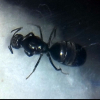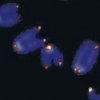I had a lot of my Formica Fusca queens dying lately, only one of them having left brood behind.
I've been testing brood boosting with some success but still have my doubts and questions about it. Definitely need to learn more and increase my efficiency on this.
I aim at the pupae since they'll be soon to come to active life with the least effort to the new colony.
I leave the eggs and larvae, the ants will feed them and take care of them, and every once in a while I return aiming for the new pupae.
I've taken the tube where the ants still keeping the brood are, and keep it inside the outworld so they can fall in it. But as soon as I do this, havoc and chaos arises from the workers, with them picking up in the eggs and specially the pupae and running around in panic. It becomes a hard job, very stressful for me and for them, with the chances of losses of workers (not critical in this case since they are queenless) and brood.
Eventually some ants drop their pupa into the sand's outworld and I can catch it with a brush into a spoon.
It's very interesting to dump the pupae into the new nest and the workers come check around and sometime immediately pick up a pupa, or sometimes after going back and forward a few times they decide to do it.
I've seen a couple of videos about this but I still have my doubts.
- Formica fusca are sometimes naked pupa. Even trying to be delicate with a cotton swab or a brush, how easy is it to kill them? Like, they have no exoskeleton, can they get hurt by falling, being dumped or by being swept?
- How long can a pupa survive before death or being too much desiccated to be considered alive or salvageable by the workers? (minutes and I need to run? Hours and I can be cool?
- Are they usually rejected? Like, workers not accepting them or ignoring them for far too long.
- What are your sources of brood? You get some from your established colonies? How do you do it while minimizing disturbance? Or from the wild?
- What's the best practical procedure to gather them without hurting them?
- Collecting the panicking workers carrying pupae around and placing them in the fridge to calm them down, would it help without hurting the pupae?
- I know a wild colony with accessible brood on the bottom of a rock, it won't do them much disturbance to collect it. They might be Formica fusca or some sort of Pheidole, about the same size.
Are these species too distinct for the Pheidole to be used to boost Formica fusca?
- How to minimize chaos and worker death in the colony, specially if it's our domesticated one?
- Callow workers, are they also accepted?
I've tried it and they seem to having been attacked, I could see a Formica fusca turning her gaster forward at her (injecting formic acid?). After a while it was quiet, I don't know if the callow was really quiet and accepted, or suffering or dying, since they don't have their exoskeletons hardened yet.
After some minutes I've lost track of the 2 introduced callows. Don't know if they hid somewhere, probably, as it was too quick for them to be eaten, if even edible.
I'm at a total loss here! ![]()
- (for my colony that had a lot of escapes and only has 3 workers now) They live in a formicarium, so it's not easy to introduce the boost there. Would it work if left in the outworld or they have to be really in their faces? (because brood is generally on their faces and not walking around in the outworld!)
Any other hints?
I know these are many doubts and questions. Me noob! ![]()
As usual, many thanks guys!
















